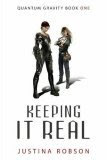SFRevu has chimed in on three recent and upcoming Pyr novels.
First, my own Fast Forward 1: Future Fiction from the Cutting Edge is given
is given a glowing review from Colleen Cahill, who says that, “this collection has a bit of something for everyone. Anders has gathered a truly outstanding set of science fiction, all with images and worlds that are new, different and exciting. It is safe to say that Fast Forward 1, hopefully the first in several such books, is a worthy successor to the Knight and Pohl series and a book every science fiction fan will want in their collection.”
a glowing review from Colleen Cahill, who says that, “this collection has a bit of something for everyone. Anders has gathered a truly outstanding set of science fiction, all with images and worlds that are new, different and exciting. It is safe to say that Fast Forward 1, hopefully the first in several such books, is a worthy successor to the Knight and Pohl series and a book every science fiction fan will want in their collection.”
 Next up, Todd Baker has some great things to say about Adam Robert’s out-any-day now hard SF of near-future war in space, Gradisil
Next up, Todd Baker has some great things to say about Adam Robert’s out-any-day now hard SF of near-future war in space, Gradisil . Praising the “intricacies of the plot, the richness of character development, and the intriguing scientific extrapolation,” Baker comments that “it is not surprising that it has been shortlisted for the 2007 Arthur C. Clarke award for best new novel.” Also of interest to me personally is Baker’s singling out of this quote from the book, with its accusations about our very modern life:
. Praising the “intricacies of the plot, the richness of character development, and the intriguing scientific extrapolation,” Baker comments that “it is not surprising that it has been shortlisted for the 2007 Arthur C. Clarke award for best new novel.” Also of interest to me personally is Baker’s singling out of this quote from the book, with its accusations about our very modern life:
You know for how much money the EU government sold the latest mobile netlink rights? Bandwidths were going for a billion euros, minimum. . . . Think of the gross! So you tell me–is that the best way of spending humanity’s money, webbing friends, playing games on the bus? A fraction of a single percent of that money, we could have bases on Mars in five years. Destiny–possibility–glorious, but no, we’ll keep frittering our money on games, on cosmetics, on flim-flam, and we’ll turn around in five hundred years and still be right here where we are now.
Finally, Ernest Lilley, who admits to not liking the book as much as he wanted to, still makes Keeping It Real (Quantum Gravity, Book 1)
Keeping It Real (Quantum Gravity, Book 1) sound pretty darn good in his introduction: “Lila Black used to be a pretty girl, but that was before she had her arms and legs ripped off by an elvish interrogator and delivered back to her human world intel agency more dead than alive. So, in the best tradition of these things, they rebuit her with cyborg battle ready parts and a Mr. Fusion heart. Unfortunately for her they either took away too much or left too much intact, depending on your point of view, because her emotions are all still quite intact, just jumbled up in a ball of revenge, remorse and oh yes…love. Now back in the field to protect an elvish rock star she’s got to come to terms with who she is before she can save her charge, and of course, the world as we know it. Well, maybe not quite as we know it…”
sound pretty darn good in his introduction: “Lila Black used to be a pretty girl, but that was before she had her arms and legs ripped off by an elvish interrogator and delivered back to her human world intel agency more dead than alive. So, in the best tradition of these things, they rebuit her with cyborg battle ready parts and a Mr. Fusion heart. Unfortunately for her they either took away too much or left too much intact, depending on your point of view, because her emotions are all still quite intact, just jumbled up in a ball of revenge, remorse and oh yes…love. Now back in the field to protect an elvish rock star she’s got to come to terms with who she is before she can save her charge, and of course, the world as we know it. Well, maybe not quite as we know it…”
 The Library Journal reviews three more Pyr titles, all recommended:
The Library Journal reviews three more Pyr titles, all recommended: Farmer, and Dan Simmons, her latest volume belongs in most libraries.”
Farmer, and Dan Simmons, her latest volume belongs in most libraries.”












